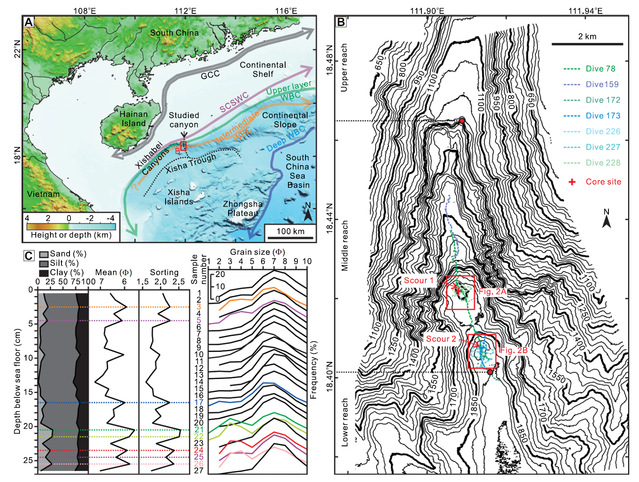Guangfa Zhong1 and Xiaotong Peng2
1State Key Laboratory of Marine Geology, Tongji University, Shanghai 200092, China
2Institute of Deep Sea Science and Engineering, Chinese Academy of Sciences, Hainan 572000, China
Abstract:Manned submersible dives discovered plastic litter accumulations in a submarine canyon located in the northwestern South China Sea, ∼150 km from the nearest coast. These plasticdominated litter accumulations were mostly concentrated in two large scours in the steeper middle reach of the canyon. Plastic particles and fragments generally occurred on the upstreamfacing sides of large boulders and other topographic obstacles, indicating obstruction during down-valley transportation. Most of the litter accumulations were distributed in the up-valley dipping slopes downstream of the scour centers. This pattern is tentatively linked to turbidity currents, which accelerated down the steep upstream slopes of the scours and underwent a hydraulic jump toward the scour centers before decelerating on the upstream-facing flank. Associated seabed sediment consisted of clayey and sandy silts, with unimodal or bimodal grain-size distributions, which are typical for turbidites. The focused distribution of the litter accumulations is therefore linked to turbidity currents that episodically flush the canyon. Our findings provide evidence that litter dispersion in the deep sea may initially be governed by gravity flows, and that turbidity currents efficiently transfer plastic litter to the deeper ocean floor.
Full Article:https://doi.org/10.1130/G48536.1



